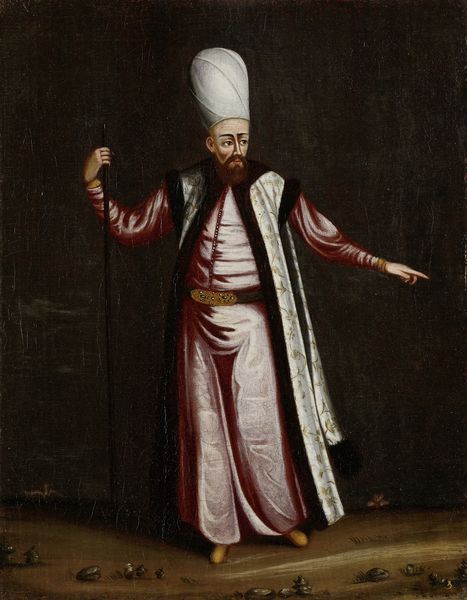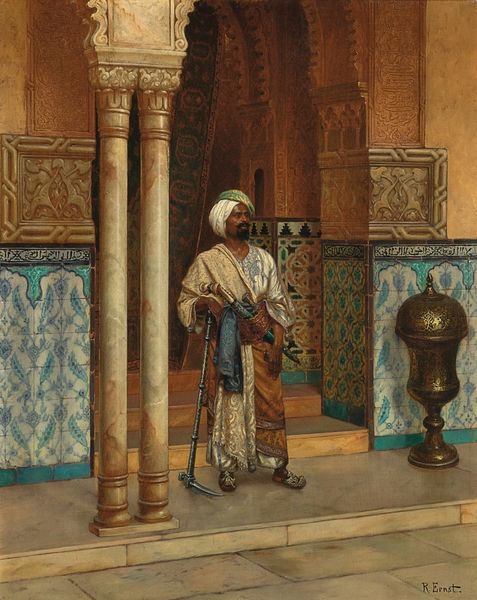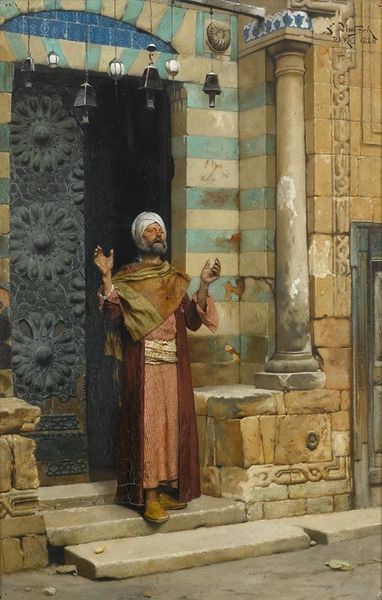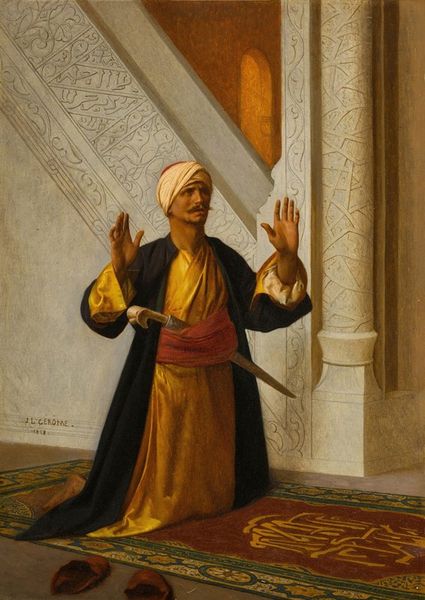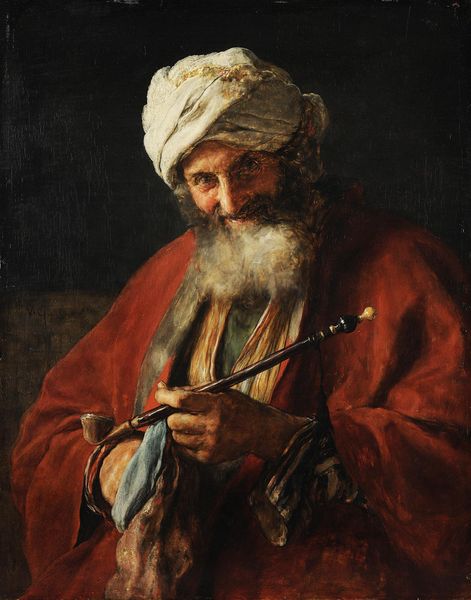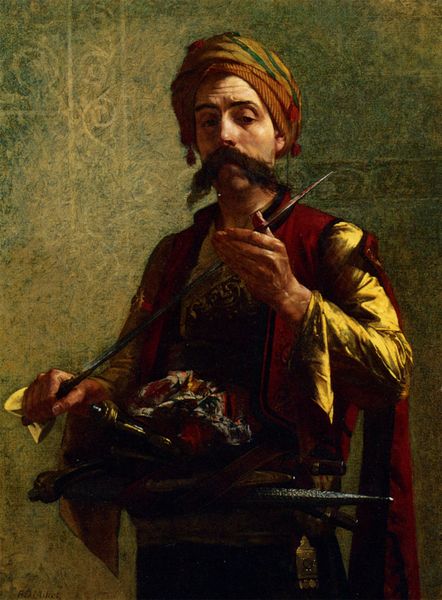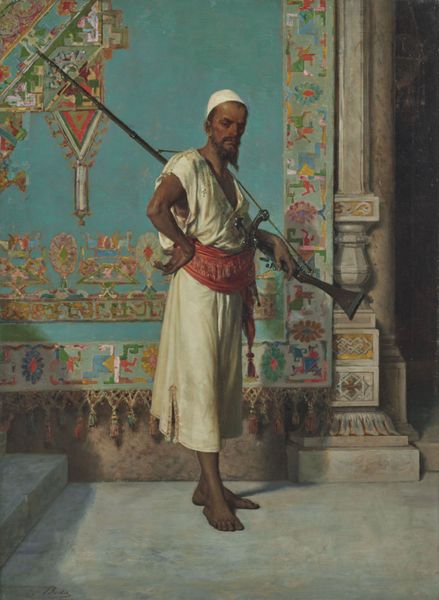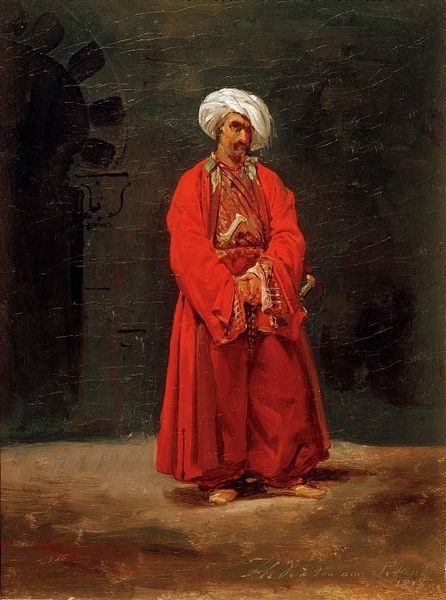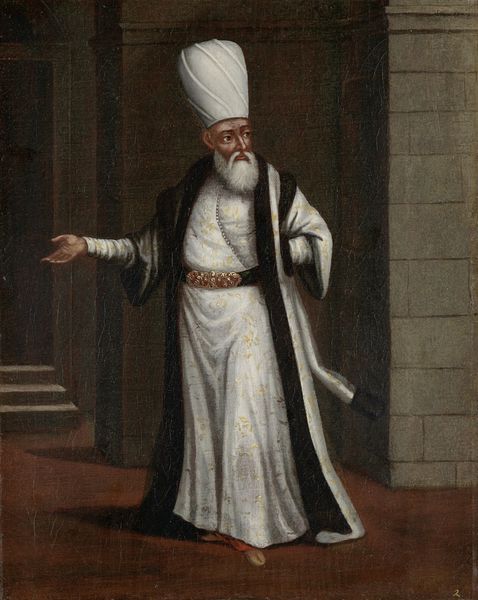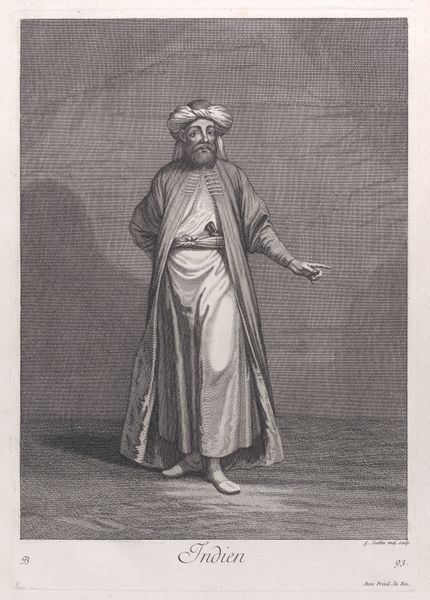
Portrait of Giovanni David as Alessandro in Pacini's Gli arabi nelle Gallie 1830
0:00
0:00
francescohayez
Palazzo Brera, Milan, Italy
painting, oil-paint
#
portrait
#
character portrait
#
painting
#
oil-paint
#
figuration
#
romanticism
#
history-painting
#
academic-art
#
celebrity portrait
Dimensions: 224 x 164 cm
Copyright: Public domain
Curator: The Palazzo Brera in Milan holds a fascinating piece from 1830: Francesco Hayez's portrait of Giovanni David, captured in character for Pacini's opera "Gli arabi nelle Gallie"—Arabs in Gaul. Editor: My initial impression? The scale feels theatrical, dramatic. The vibrant red and the intense expression definitely grab your attention immediately. It's almost as if a spotlight's hit him mid-performance. Curator: Absolutely! And it’s not just any performance. It’s David portraying Alessandro, likely during a pivotal scene from Pacini's opera. Notice how Hayez, steeped in Romanticism, uses this figure to explore the exotic and emotional extremes so favored by the movement. The turban, the loose fitting garb—each element points to a fascination with the “Orient.” Editor: The turban itself is quite striking. Historically, turbans signified not just cultural identity but also status and religious affiliation. Here, it becomes part of this dramatic "oriental" costume, layered with all the romanticized assumptions that came with that gaze. It feels almost... fetishized? Curator: It’s definitely a constructed image, a staged portrayal feeding into a very specific European fantasy. However, I find it intriguing how Hayez uses this "otherness" to comment on identity and performance itself. He knew he was painting David playing a role— a triple layering of identity! It blurs lines in ways that resonate even now, particularly considering the academic style employed. Editor: And look at the contrast with the woman behind him; she is downcast, shrouded in dark mourning, clearly in distress. Is it another aspect of Alessandro's dramatic power, his effect on others? Is she another prop in his spectacle? Or is this highlighting the romantic and often painful tension in the relationships represented? Curator: Precisely! That opposition invites the viewer to unpack the narratives at play, questioning how power, emotion, and representation intersect. The scene isn't just spectacle; it becomes an allegory for human experience, amplified through the operatic lens. Editor: Well, now, when I revisit it, that initial impression of theatricality remains, but layered with complexities and challenging questions. It has a weight beyond the flamboyance. Curator: Indeed. It reminds us that a simple "portrait" can hold worlds of cultural memory, theatrical expression, and layered interpretations of history and self.
Comments
No comments
Be the first to comment and join the conversation on the ultimate creative platform.
